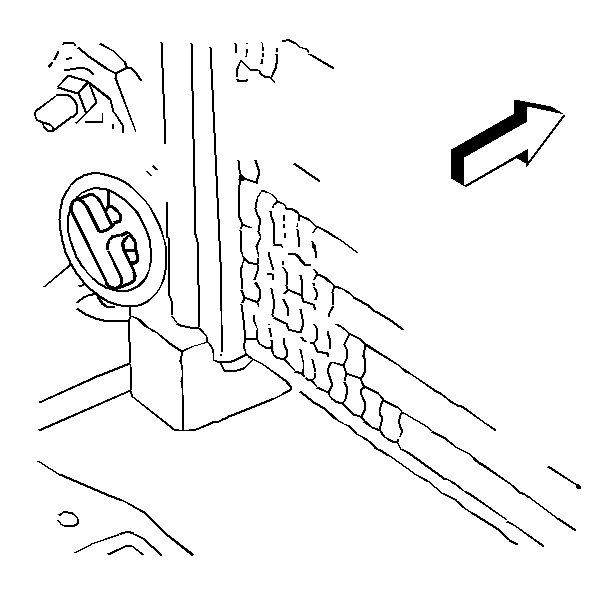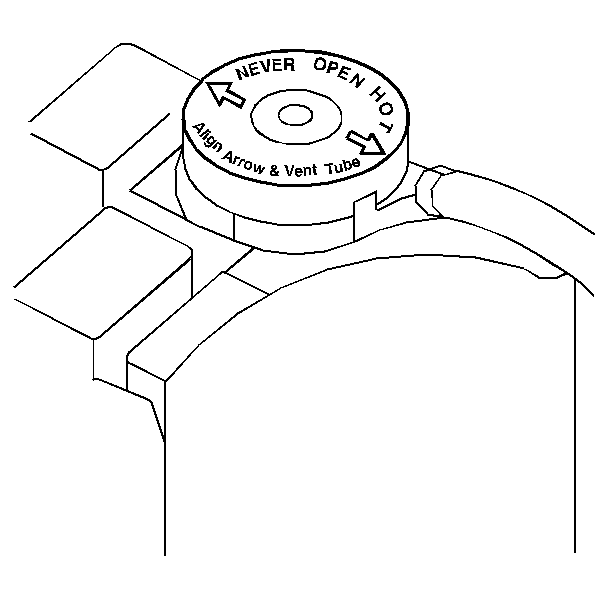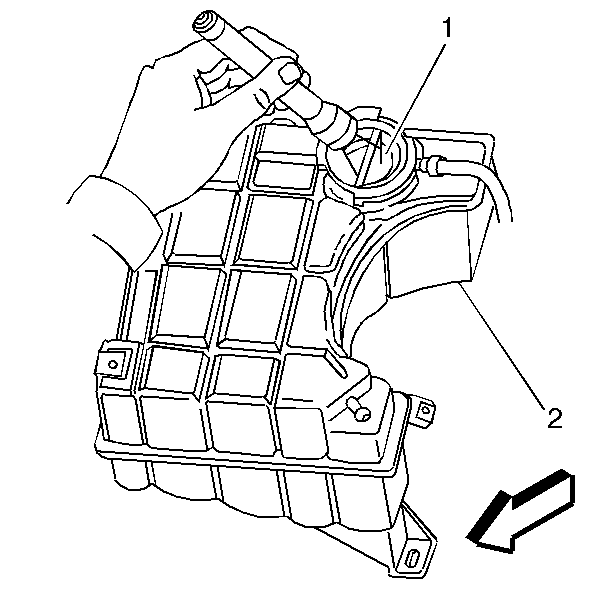Draining Procedure
Notice: When adding coolant, use DEX-COOL® coolant. If silicated coolant
is added to the system, premature engine, heater core or radiator corrosion
may result. In addition, the engine coolant will require change sooner-at
50 000 km (30,000 mi) or 24 months.
Notice: The 4.6L engine uses DEX-COOL™ and GM coolant supplement (sealant)
P/N 3634621 specifically designed for use in aluminum engines. Failure to
use the engine coolant supplement (sealant) and the approved coolant antifreeze
could result in major engine damage. When refilling the cooling system, add
three pellets of the engine coolant supplement sealant GM P/N 3634621 to lower
the radiator hose.
- Park the vehicle on a level surface.
Caution: With a pressurized cooling system, the coolant temperature in the radiator
can be considerably higher than the boiling point of the solution at atmospheric
pressure. Removal of the surge tank cap, while the cooling system is hot and
under high pressure, causes the solution to boil instantaneously with explosive
force. This will cause the solution to spew out over the engine, the fenders,
and the person removing the cap. Serious bodily injury may result.
- Remove the surge tank pressure cap. Refer to
Cooling System
.

- Completely drain the cooling
system by opening the drain cock at the bottom of the radiator. If the coolant
is dirty, or if there are deposits in the radiator, flush the cooling system
before refilling. Refer to
Flushing
.
- Disconnect all the hoses from the surge tank.
| 4.2. | Clean the inside of the surge tank with soap and water. |
| 4.3. | Flush the tank with clean water. |
Engine Coolant Recycling
Tools Required
GM approved Recycling System such as Pro Clean (Available in the GM
Dealer Equipment Program)
Whenever the cooling system needs maintenance or repairs, remove and
replace the coolant with qualified new or recycled coolant.
If you only drain the radiator, up to 50 percent of the used, contaminated
coolant can remain in the cooling system.
Use any of the following methods in order to remove the coolant:
| • | Use a waterless coolant evacuation system, available in the GM
Dealer Equipment program, or equivalent, that removes the used coolant and
replaces the coolant with new or recycled coolant. |
| • | Use a GM approved coolant recycling system, available in the GM
Dealer Equipment program, or equivalent, that recycles the coolant on the
vehicle. This eliminates the need for coolant evacuation. |
| | Important: Do not recycle coolant on vehicles manufactured with GM Goodwrench Dex-Cool.
|
| • | Recover the used coolant. Store the coolant in a used coolant holding
tank. Submit the used coolant for recycling on a regular basis. |
Filling Procedure

- Close the radiator drain cock. Install the engine block drain plugs
if these were removed.
Notice: Pure coolant can be added to raise the boiling point of the coolant,
but too much will affect the freezing point. Do not use a solution stronger
than 70 percent, as the freeze level rises rapidly after this point.
Pure coolant will freeze at -22°C (-8°F).
- Refill the cooling system.
- Set the heater temperature to 32°C (90°F).
- Allow the engine to continue idling until the radiator outlet
hose becomes hot.
- Cycle the engine speed up to 3000 RPM and back to idle
5 times.

- Install the surge tank pressure cap. Align the arrows on the cap with the
overflow hose.

- Allow the engine to cool to the outside
temperature. Then, check the level of the coolant in the surge tank. The coolant
level should be at or above the surge tank landing (bottom) (1) in the inboard
cavity (2) below the filler neck.




